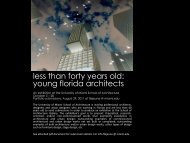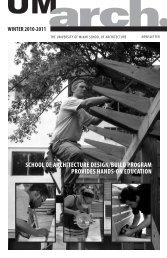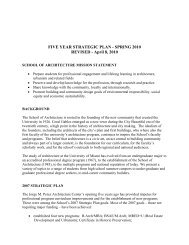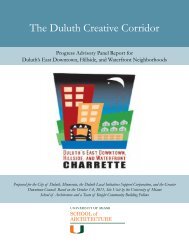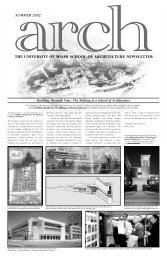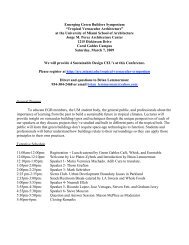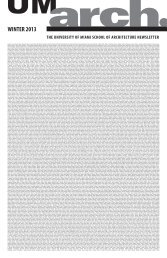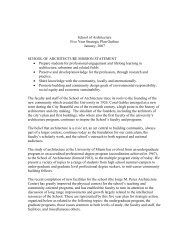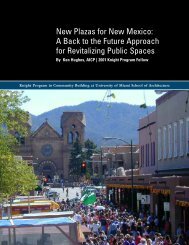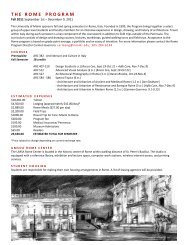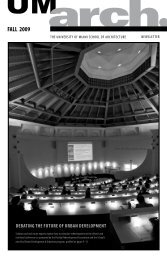Full Report - Knight Program in Community Building
Full Report - Knight Program in Community Building
Full Report - Knight Program in Community Building
You also want an ePaper? Increase the reach of your titles
YUMPU automatically turns print PDFs into web optimized ePapers that Google loves.
HURLEY | THE PUBLIC PROCESS5Over the last thirty years, alternative dispute resolution has grown <strong>in</strong>to a professionalfield of practice, complete with academic theory, field-tested techniques, andpractice area specializations. Public participation and public policy dispute resolutionis one area of specialization. Current practice and theory <strong>in</strong> this area have developedfrom a variety of sources.The Civil Rights and Fem<strong>in</strong>ist movements of the 1950s – 1960s drew attentionto the dynamics of power and promoted <strong>in</strong>dividual self-determ<strong>in</strong>ation and socialequity. The failures of 1960s urban and transportation programs spawned disillusionmentwith government and the role of experts, lead<strong>in</strong>g to demands for, andeventually federal requirements for, more participation of citizens <strong>in</strong> plann<strong>in</strong>g anddevelopment decisions.The 1960s – 1970s environmental regulations issued to implement the NationalEnvironmental Policy Act (NEPA), the Clean Water Act, the Clean Air Act, theEndangered Species Act, and the Comprehensive Environmental Response,Compensation, and Liability Act (CERCLA; a.k.a. Superfund), among others, led togridlock <strong>in</strong> the courts. Environmentalists were dissatisfied because environmentalregulations were on hold; the EPA was dissatisfied because it could not implementCongress’ mandates, and <strong>in</strong>dustry was dissatisfied because of last<strong>in</strong>g uncerta<strong>in</strong>ty.Everyone was unhappy with the high costs and long delays engendered by fight<strong>in</strong>gpolicy battles <strong>in</strong> the courts. They looked to the experience of federal programs tomediate labor disputes, and began to develop multi-party mediation techniques.Because the emphasis was on break<strong>in</strong>g adm<strong>in</strong>istrative and judicial gridlock, the goalof these experiments was to develop consensus among all of the parties.At the same time, the grow<strong>in</strong>g presence of community mediation programs ledto the availability of tra<strong>in</strong>ed mediators <strong>in</strong> community sett<strong>in</strong>gs. Some of these programsexpanded beyond <strong>in</strong>dividual disputes to address community disputes, often relatedto local plann<strong>in</strong>g decisions.All of these forces led to a thriv<strong>in</strong>g field of academic study and professionalpractice. Today, the Association for Conflict Resolution (created by a merger of theSociety for Professionals <strong>in</strong> Dispute Resolution, Academy of Family Mediators, andConflict Resolution Education Network) has eighteen divisions of practice, withover seven thousand members. Universities around the world have departments ofConflict Resolution, <strong>in</strong>clud<strong>in</strong>g several with Ph.D. programs.




